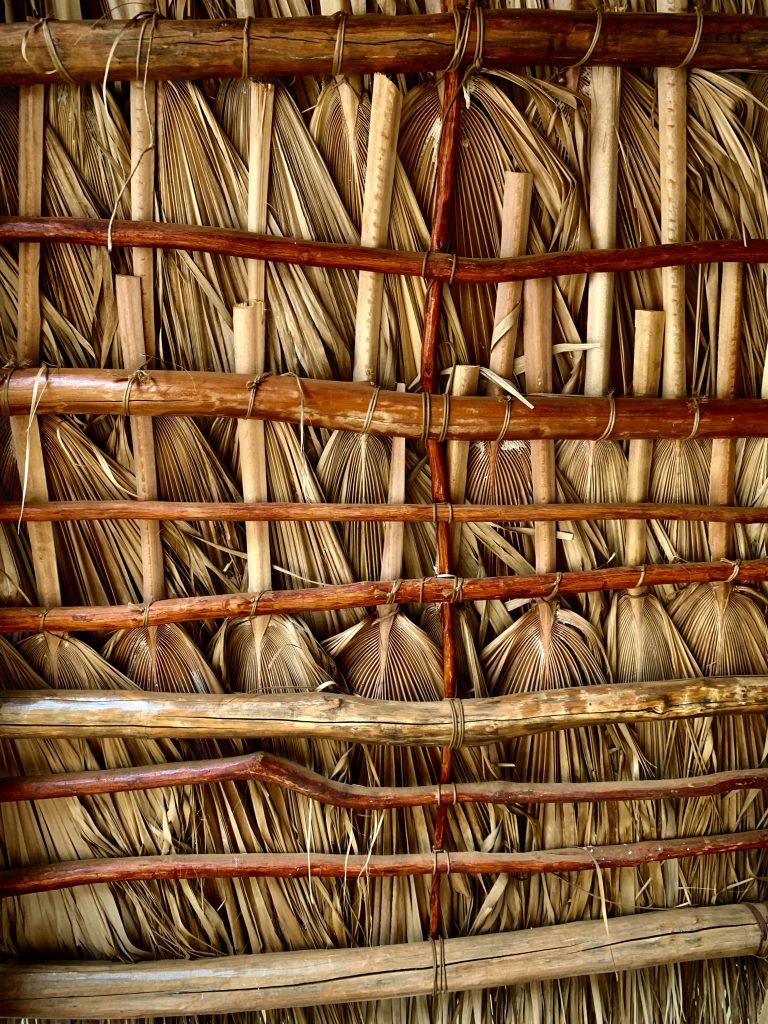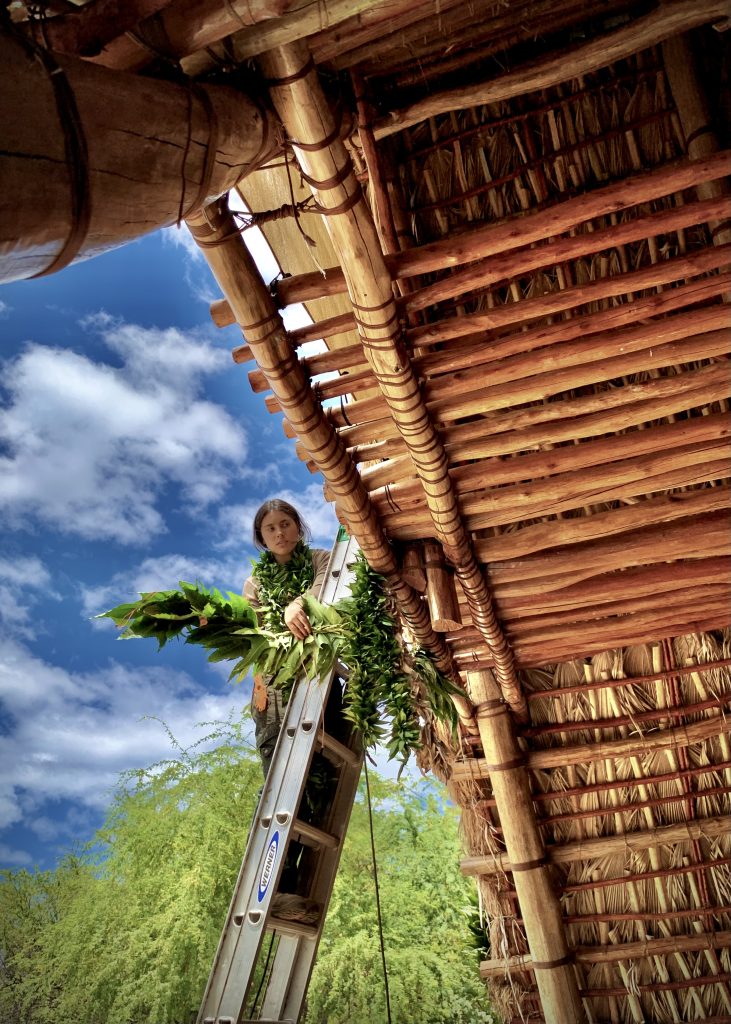Traditional hālau waʻa blessed in Mākena, honoring Hawaiian cultural practices

A newly constructed hālau waʻa, a traditional Hawaiian canoe house and learning space, was blessed on March 21 in Mākena. Built under the guidance of master builder Kuhikuhi Puʻuone Francis “Palani” Sinenci and his hālau of practitioners, the structure represents a milestone in preserving Native Hawaiian architecture and cultural knowledge.
Named “Hale Pili,” the hālau waʻa was funded by the Mākena Golf & Beach Club and honors the advocacy of long-time genealogical descendants who continue to push for community gathering spaces. Following a series of community workdays in partnership with Kīpaipai Maui and the Aloha Mākena Foundation, the structure now transitions from its builders to the stewardship of Mākena Golf & Beach Club’s ʻŌiwi Resources & Stewardship Department.
The blessing ceremony brought together cultural practitioners, community members and lineal descendants of the Mākena area. Attendees heard remarks from Maui Emergency Management Agency Director Amos Lonokailua-Hewett and a representative for Mayor Richard Bissen. The event concluded with a traditional Hawaiian meal in celebration of the blessing.
Perpetuating an essential artform

For generations, the skill and practice of kūkulu hale (hale building) has been central to Hawaiian life, embodying values of laulima (many hands working together) and environmental stewardship.
“Perpetuating the skill of kūkulu hale is essential to the well-being of the Hawaiian people,” said Kauwila Hanchett of Hōlani Hāna. “Encoded within this cultural practice are keys to life—living in harmony with oneself, others and the natural environment. The process of building a hale is the rebuilding of community, the restoring of native identity, and the reclamation of spiritual abundance to nurture Hawaiian people and all who call Hawai‘i home.”
Marinel Robinson, vice president of development at Mākena Golf & Beach Club, emphasized the importance of honoring the living culture of Mākena and Honuaʻula. “The hale as a hālau waʻa is a recognition of the long-time fishing and shoreline gathering families of the area and is also a space for continued learning. We are grateful for the guidance of Kumu Palani and Hōlani Hāna and the opportunity for our ʻŌiwi Resources & Stewardship Team to become the caretakers of the hale.”
Community stewardship and the future of Hale Pili
Hālau waʻa and Hale Pili are more than just physical structures; they are cultural piko, places where ancestral knowledge, traditional values, and collective intentions are embedded in pōhaku (stone), lā‘au (wood), ‘aho (cord) and lau (leaf).
The completion of Hale Pili reflects the intention of Aloha Mākena, providing a vital indigenous space that honors and supports the generational families of Mākena as they continue their stewardship of the area’s unique environmental, cultural and spiritual heritage.
A legacy of training and mentorship
For over 30 years, Kumu Palani has worked to restore hale to Hawai‘i’s landscapes. He has built over 300 hale across Hawai‘i, from schools and cultural centers to botanical gardens and national parks. He has also committed himself to training the next generation of hale practitioners, ensuring that this knowledge remains alive and thriving.
Now in his 80s, Kumu Palani continues this work through Hālau Hale Kuhikuhi, where he focuses on mentoring successor practitioners to perpetuate kūkulu hale and ʻuhau humu pōhaku (traditional stone masonry). His efforts align with Hōlani Hāna, a nonprofit dedicated to revitalizing traditional Hawaiian practices and creating sustainable employment pathways for cultural practitioners.
Kainoa Holt, one of the practitioners involved in the building of this hale said, “the building of a hale is also the building of a community and the bringing together of many hands and souls. Through this, we can deepen our connections with each other and with our culture. It’s important that this practice is upheld and continued for future generations, and I am very grateful that the team with Hale Pili has put so much effort into the preservation of this cultural tradition.”

The transition of Hale Pili from the builder to its stewards will also be a recognition of the training completed by the Mākena ʻŌiwi Resources & Stewardship team. The individuals on this team have participated in every step of the hale building process, empowering them with the embodied knowledge of how to care for this hālau waʻa into the future.
“The ʻŌiwi Resources Team is comprised of dedicated, hard working individuals who spent long days and nights living the Honuaʻula proverb – ‘Honuaʻula kua laʻolaʻo,'” said Brad Anderson, Mākena Golf & Beach Club’s senior director of development. “We celebrate these individuals as they step into their next level of responsibility as Hale Pili stewards.”
To support the work of Hōlani Hāna and Hālau Hale Kuhikuhi, or to learn more about their initiatives, visit Hōlani Hāna’s website at www.holanihana.org.
To explore more about Hale Pili, visit: https://www.makenainfo.com/halepili















